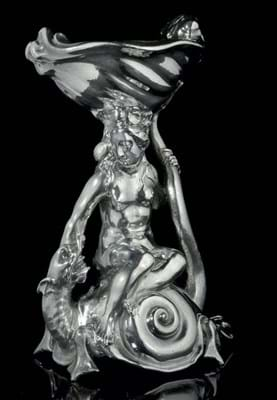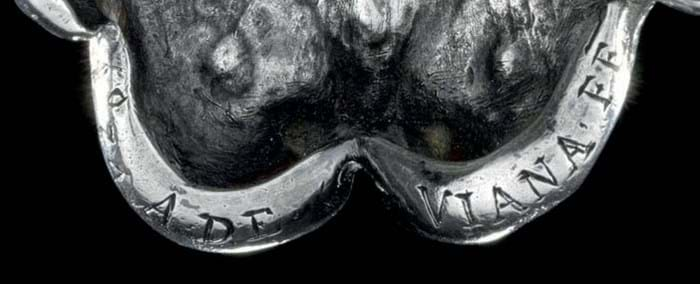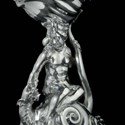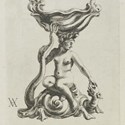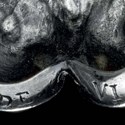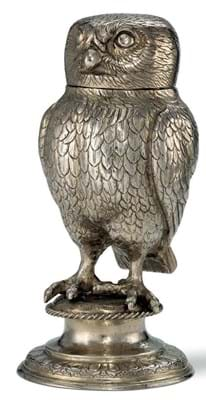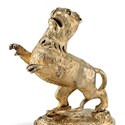However, it reached its apogee at the Utrecht workshop of the greatest silversmiths of the Dutch Golden Age, brothers Paulus (c.1570-c.1614) and Adam van Vianen (c.1569-1627).
Remarkably, given their great rarity on the market, two pieces by Adam have appeared for sale in a matter of four months. A superb ewer with medallions recounting the Roman myth of Marcus Curtius dated 1619 sold at Christie’s New York in April for $5.4m (inc buyer’s premium).
It was followed by a figural salt from 1624 that formed part of the Sotheby’s (25/20/12% buyer’s premium) July 4 Treasures sale.
Salty sea monster
Signed Ao 24 ADe Viana Fe, the 8in (20cm) high salt depicts Galatea, her hair encrusted with shells, supporting the cellar while seated on a fantastical sea monster.
It is among the series of 48 etchings of designs by Adam published by his son Christian van Vianen in Constige Modellen… in the 1640s. Rather than cast, it was – using a very high standard of silver (990 parts per 1000) – fashioned with huge skill from a single sheet of metal.
Prior to a 1937 sale at Sotheby’s it had been in the Rothschild family for much of the 19th century. Offered for sale by a Dutch private collector with an estimate of £600,000-800,000, it sold at the top end of expectations for £850,000.
Christie’s (25/20/12% buyer’s premium) equivalent sale, grouping together the best of the decorative arts under the title Exceptional on July 5, included two German animal cups bought by the consignor at the Yves Saint Laurent and Pierre Bergé collection sale held by Christie’s in Paris in February 2009.
Saint Laurent and Bergé owned a menagerie of silver-gilt cups – a collection inspired, recalled dealers Nicolas and Alexis Kugel, by a photograph of Marie-Laure de Noailles reclining next to a gueridon filled with similar animals.
Welcome cup roars in
Willkommen pokale or welcome cups such as these, offered to guests on arrival, often took a form relevant to their owners such as a heraldic beast or the symbol of a guild. Lions and owls were among the most popular.
The 6in (15cm) high lion cup c.1570 is by Martin Malfeit, a goldsmith, probably originally from the Netherlands, who became a master of the Nuremburg guild.
Little of his work is known (only one other piece is recorded) but his wife Esther was the daughter of the goldsmith Hans I Bauch, while his own daughter Susanna married Georg Rühl, who was to produce some of the most exceptional Nuremburg silver for the following generation.
In 2009 it had sold at €229,000 (£202,654). Pitched here at £180,000-250,000, it sold on the reserve at £160,000.
One wonders if Tobias Zeiler had ever seen the king of the jungle when he made a similar 8½in (21cm) high vessel in the form of a lion rampart c.1630.
Zeiler was made a master of the Augsburg guild in 1625 and married Euphrosina, the daughter of fellow goldsmith Hans I Peter. It too sold below estimate at £160,000 – considerably less than the €265,000 (£234,513) it made in 2009


